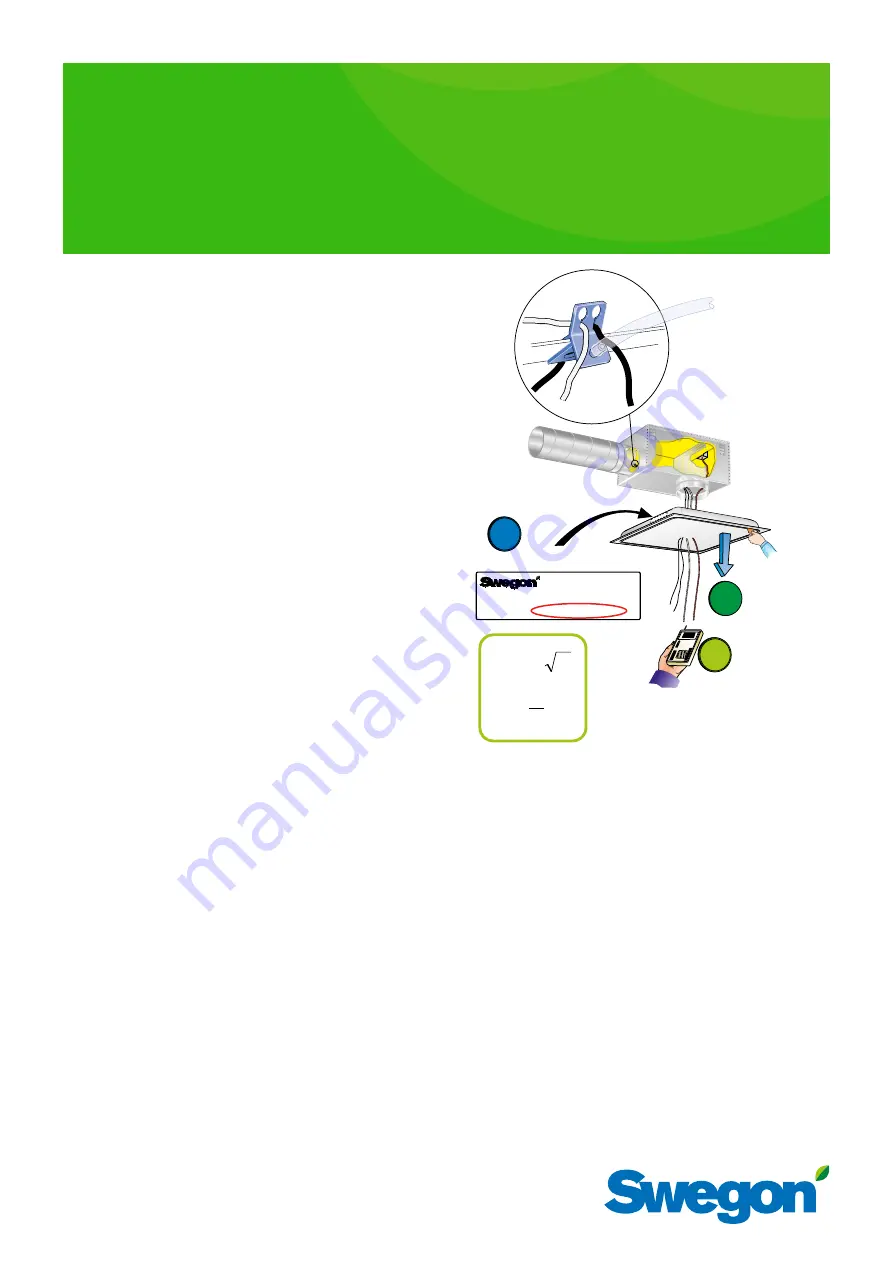
Accessories
Commissioning box:
ALS. The commissioning box is made of galvanized sheet steel
and contains a removable commissioning damper, fixed measu-
rement tapping and sound absorbing materia
l*)
with reinforced
surface layer.
*)
Fire resistance rated to B-s1,d0 in accordance with EN ISO 11925-2.
Frame:
SAR K, for aesthetic installation of a lowered diffuser section.
Adapter:
ADAPTER, for adaptation to various variants and makes of sys-
temized false ceilings: Ecophon, Gyproc, Dampa, etc. Used also
for adaptation to alternative sizes of systemized false ceilings,
e.g. 625 x 625 or 675 x 675. Specification available in separate
product sheet for ADAPTER.
Installation
To dismantle the front face, insert a thin object, for example a
Quick Access card or the equivalent, in between the diffuser
face and the diffuser backing box in order to release the springs.
Move the card from the centre out towards the corner, see
Figure 2.
The inlet spigot of the air diffuser backing box can be secured to
the connecting duct by means of self-tapping screws or a blind
rivets. For flush-mounting in fixed ceiling constructions, secure
the air diffuser by means of screws into place in the framework
through either the sides or top of the air diffuser backing box.
For mounting in modular suspended ceilings, it is advisable to
select air diffusers with outer dimensions of 595 x 595 mm.
Position these directly down in the T-bar framework, and then
secure them to the duct system or to the commissioning box.
If an ALS commissioning box is used, it must be secured to the
building structure by means of hangers or mounting brackets.
The distance between the commissioning box and the air dif-
fuser can be increased by as much as 500 mm without having
to lengthen the measuring tubes and damper adjustment cords.
See Figure 3.
Commissioning
Commissioning should be carried out with the front face mounted.
Pull the measuring tubes and damper adjustment cords out
through the front face. Then connect the manometer to the cor-
rect measuring tube. Always use the transparent tube for extract
air.
The rated coefficient of performance of the air diffuser can be
used in a calculation to determine the required commissioning
pressure. Conclude commissioning by adjusting the damper to the
correct blade position, tie a commissioning knot in the damper
cords to indicate the damper position.
Figure 1. Commissioning.
Quick
Access
PELICAN HF
Tomelilla
Sweden
XX0-600
+ALS XXX -XXX/XXX -XXX
k
q
K = XX / XX
p
k
p
q
⋅
=
k
p
q
=
( )
2
q
= flow reading l/s
p
= current pressure reading (Pa)
k
= commissioning factor
k-factor
Measurement accuracy and requirement on straight duct before
the commisioning box, see Figure 3. The requirements of straigh
duct depends on the type of disturbance before the commis-
sioning box. Figure 3 shows a bend, a dimensional change and
a T-piece. Other types of disturbances requires at least 2xD
straight (D = connection dimension) for measurement accuracy
of ± 10% of the flow.
The rated coefficient of performance (K-factor) is specified on
the identification label of the product and in the relevant com-
missioning instructions at www.swegon.com.
Maintenance
The air diffuser can be cleaned, if necessary, using lukewarm
water with dishwashing detergent added or by vacuum clean-
ing using a brush nozzle. The duct system can be reached for
cleaning after opening the front face. If a type ALS commission-
ing box is used, swing the front face to the side on its hinges so
that you then can grip the handle of the tubular damper casing
and rotate it out of its holder. See Figure 4.
PELICAN
Ceiling HF
Installation – Commissioning – Maintenance
20150615





















